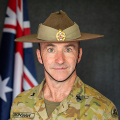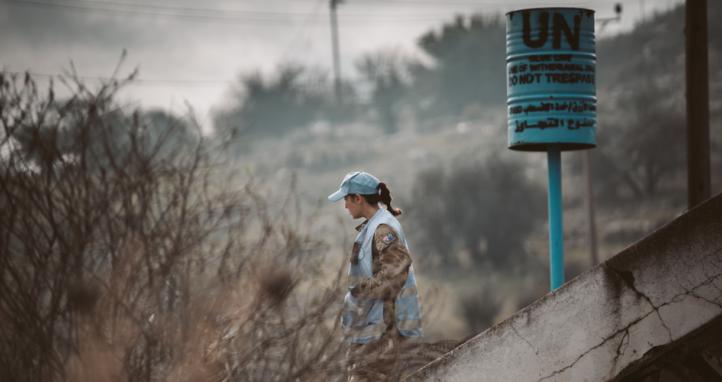Content warning: This article delves into mental health issues which may be distressing to some people.
Physical wounds are visible and can usually be treated.
Other wounds impact the psyche and soul. These 'unseen wounds' can be more difficult to identify and understand, their treatment is often more complex and longer-term, and their pain may take months or years to emerge. What is recently labelled 'moral injury' is not new to soldiering. Soldiers throughout history have been put in situations where they act in ways that are inconsistent with their moral values, or witness such actions. But the dilemmas of contemporary warfare arguably make these resulting interior moral wounds more prevalent.
Professor Tom Frame brings his background as a Naval Officer and Anglican Bishop to the Defence Force to edit Moral Injury. He invites together the contributions of 18 military officers, historians, ethicists, chaplains and psychologists.
Chapters begin with historical perspectives from the experience of ‘shell shock’ and atrocity propaganda from WWI. Notably for example, in WWI soldiers had a slow boat home to decompress, but today a flight gets them home much more suddenly.
Among the most insightful and raw chapters are the personal perspectives of, firstly, LTGEN Mark Evans AO DSC discussing the command responsibility of safeguarding physical and mental, but also moral wellbeing in morally ambiguous circumstances. It includes the most inspiring sentence of the book, quoting a soldier in East Timor taking a morally courageous stand and thus declaring 'Not on my watch. Not this time' (p,58). Secondly, an officer unpacks moral complexity and guilt-laden second-guessing around a mass casualty event they feel could have been avoided. Thirdly, Chaplain Haydn Swinbourn reflects on their experience of brutality in Bali, Baghdad and Timor-Leste and a self-admitted vocational hollowness. Although a chaplain may have unique resilience resources, they can also be fragile and need their own healing.
Another section delves into philosophical/ethical perspectives, including the complexities of anti-terror and counter-insurgency, different therapeutic and philosophical approaches to moral injury, the place of self-forgiveness and spiritual cleansing, and the distinction of moral trauma versus moral degradation (as when a soldier should feel troubled but does not).
Although moral injury is not just about psychology, a fourth section helps practitioners to learn from psychological perspectives. These include debated definitions of moral injury, differentiating it from Post-Traumatic Stress Disorder, recognising the influences of inhumanity, injustice and moral culpability, and psychologists who themselves point towards the need for spiritual interventions alongside psychologically-informed therapy.
The most comprehensive chapter is the first of the practical perspectives offered by Rob Sutherland 'Is moral injury the answer?' As a chaplain, he draws attention to the need for attentiveness to worldview, meaning and resources for dealing with guilt, betrayal and abuse. He unpacks challenging historical and contemporary experiences of moral injury, including responding to the soldier who said to him, 'Padre, I’m seeing my psychiatrist and psychologist and doctor, I’m taking all the pills they give me and I’m doing their programs, why do I still want to kill myself?' (p.191) The second practical chapter is from another chaplain, who is also an ethicist, Nikki Coleman. She advocates for inviting the contribution of ethicists and chaplains alongside psychologists, reintegrating holistic treatment including ritual and ceremonies, and utilising local church support alongside other support services.
The volume concludes with two religious perspectives – first from Sarah Gibson who presents chaplains as subject matter experts of the inner life, and moral injury as a state of the heart and spirit – not just a mental health issue. Finally, Tom Frame explains how Christian morality shapes soldiers whether or not they are people of faith, and underlines the importance of character training and asking the existential questions around 'what is it all for?'
I appreciated three distinctive strengths that make this book stand out as a valuable resource amongst the growing literature on moral injury. Firstly, there is a lot of conversation about moral injury in North American and other contexts, but this is a uniquely Australian contribution by and about Australian military members and those who support them. Secondly, there is a whole broad discussion spanning a number of years about the definition of moral injury, whereas this book focuses more on understanding the experience and pointing towards effective treatment methods. Thirdly, most literature is psychology-dominated, but this collaborative work appeals for and models a multi-disciplinary approach, including paying attention to the reality of spiritual wounds.
The gathering where these chapters were presented and the resulting edited book were one of the initial steps in a larger-scale developing research project into moral injury that Tom Frame was catalysing. More work is needed in developing and evaluating models for holistic support, including the unique contribution of chaplains. Moral Injury: Unseen Wounds in an Age of Barbarism is foundational reading for all chaplains and other military professionals interested in understanding and healing moral injury, or even better helping to avoid it in the first place.
If you found any of this content distressing and would like to talk to someone, there are a variety of support services available to you:
- Lifeline – 13 11 14
- Beyond Blue – 1300 224 636
- Suicide Call Back Service – 1300 659 467









